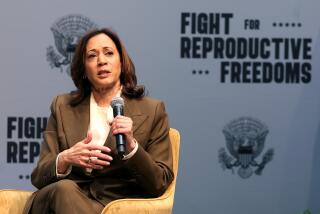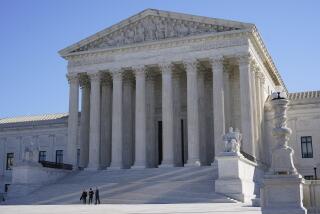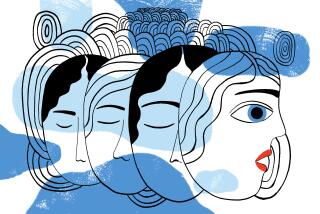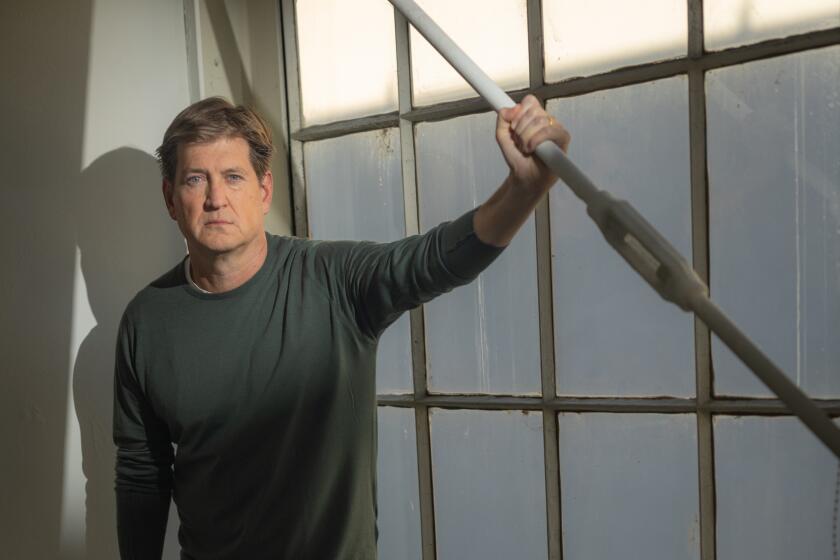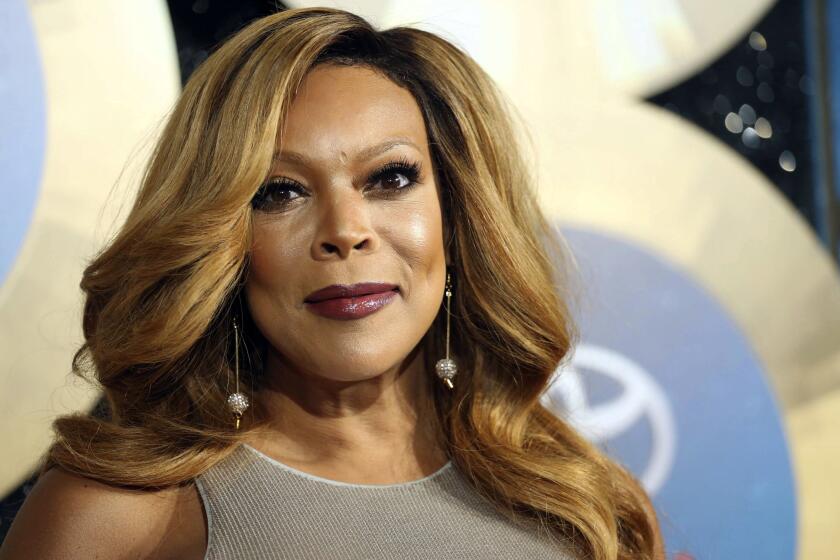Abortion Issue Quickly Segues Into the TV Spotlight
WASHINGTON — Just after 10 a.m., two runners carrying documents broke from the front door of the Supreme Court, tore down the marble steps and raced over to the CNN and the NBC umbrellas.
The crowd surged toward the lights. The competing abortion rights and anti-abortion demonstrators, which had been staging a fierce battle of pep squads on the sidewalk, went silent. Even the man dressed as the Pope to protest the Roman Catholic Church’s authority as an expert on sex stopped and watched.
The network correspondents, after nearly a month of rehearsals and false alarms, had three or four minutes to digest the 77-page court opinion before going on the air.
Machinery Starts Up
The machinery of modern democracy, inevitably connected now to the end of a microphone and linked by cables to the double-parked satellite microwave trucks, began to churn.
If James Madison imagined democracy as a kind of outdoor flea market of competing groups peddling their wares in a wearying, blurry cacophony, the steps of the U.S. Supreme Court Monday on the morning of the court’s decision in Webster vs. Reproductive Health Services came close to realization of the metaphor.
Part of what the sellers at this flea market were selling was “spin”--the most advantageous interpretation on the decision from a particular point of view. For both sides, it seemed to be to make the decision as apocalyptic as possible.
Opposing Views Aired
Thus within moments of the decision, Planned Parenthood’s Faye Wattleton was calling the court decision “an outrage” on NBC, while Dr. John Willke of the National Right to Life Committee was in front of 36 cameras on the other side of the court steps calling the decision the begining of a new era.
But there was more going on than controlling the spin.
‘I don’t think it serves any political agenda to utter a few platitudes,” said Roger Evans, litigation director for Planned Parenthood, which brought the Webster case to the court three years ago. Getting in front of the camera on network television, he said, helps the interest groups to raise their visibility and fund-raising.
So those from the American Collegians for Life to the National Organization for Women had their public relations staff circulating, looking to alert anyone wearing press passes of news conferences later in the day.
Among the competing interests vying to be heard, capitalism was not lost.
Spectator Spot Bought
Former used car dealer Randall Terry, director of Operation Rescue, the anti-abortion group, wanted to be in the courtroom’s public gallery so much that he had one of his staff offer to buy the spot of anyone of the first 50 spectators waiting in line. No. 11, Patrick Baker was persuaded, went for $100.
But Terry had visibility in mind, too. He made sure that he was one of the first down the steps to tell the cameras how the court had ruled, which guaranteed his group time at least on CNN’s live broadcast from the scene. He was beaten to the press conference area, however, by Molly Yard, the president of the pro-abortion rights National Organization for Women.
But even in this marketplace there are rules.
Demonstrators carrying placards are not allowed on the court grounds, so they protested on the sidewalk.
It was here that a man calling himself Father John of the Face dressed in a Franciscan monk’s robes led demonstrators in saying the Rosary. It was here that George Lucas, director of a small group calling itself the American Life League, attracted TV coverage by coming to the court to protest abortion with a swath of American flags and singing a version of “God Bless America” that ranged over several keys.
Cheerleading Battles
At times, demonstrators pro and con would take each other on in cheerleading battles that resembled a high school halftime show--”Life yes, abortion no,” drowned by “Right to life, your name’s a lie; you don’t care if women die.”
Occasionally, small debates would erupt and quickly evolve into Morton Downey Jr. nose-to-nose shouting fests.
Others came simply to be a part of history. Yale undergraduate Michael Carrier of New York had waited since 10:30 a.m. Sunday to be first in line for seats in the public gallery 23 hours later. Jim Paul of Beverly Hills, Calif., was second. “A decision of this importance, I had to be here,” Carrier said.
But the biggest draw for tourists was not the court but the media. More than an hour after the decision was announced, at least 200 onlookers remained, staring in rapt attention as CBS’ Rita Braver stood alone looking bored for about 10 minutes, part of the time with her eyes closed, waiting for her next live stand-up.
For nearly a month, all three networks had been on what CBS producer Tom Seem called a full “special events standby” status, meaning that they were ready to break into regular programming on those days if the court had handed down this decision.
10 NBC Crews on Standby
NBC had five correspondents, six producers, 10 crews, three microwave trucks and senators, congressmen and special interest group guests on standby 10 different mornings in anticipation of the decision, according to bureau chief Tim Russert.
In the marketplace of ideas, interests can change quickly. Rep. Robert K. Dornan (R-Garden Grove) showed up late--police at first shooed him away for illegally parking--and promptly got into an argument with a group of college women calling themselves Catholics for Choice.
But when the argument over theology and politics ended, one of the women asked him for tickets to the White House tour. Always quick to recognize a potential constituent, Dornan quickly consented:
“My office,” he told her, “is fastest on the Hill with White House tickets.”
Staff writer Michael J. Ybarra contributed to this story.
More to Read
The complete guide to home viewing
Get Screen Gab for everything about the TV shows and streaming movies everyone’s talking about.
You may occasionally receive promotional content from the Los Angeles Times.
